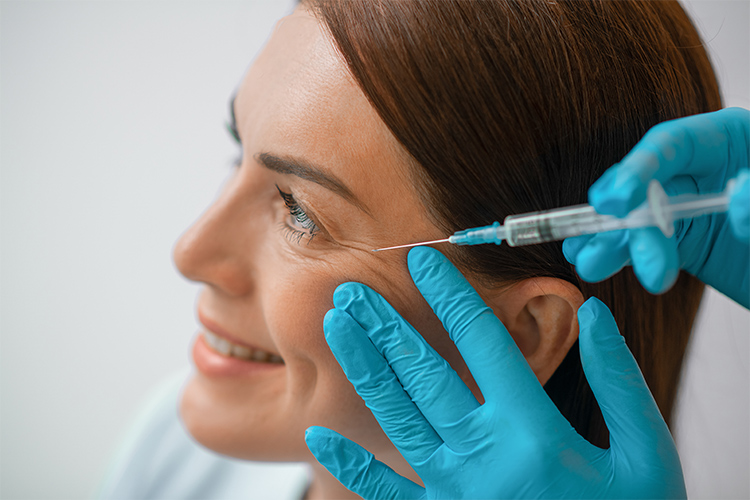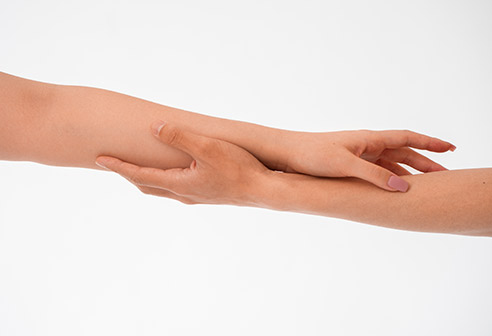
Botox is a frequently used procedure for both medical and aesthetic purposes. However, sometimes the Botox procedure causes some undesirable side effects. One of these effects is eyelid drooping, also known as ptosis. This effect, which is rarely seen in two to three percent of patients who undergo Botox, should be taken seriously. First, it is important to know that eyelid drooping after Botox is a temporary problem. The complication of ptosis can be easily treated. Depending on the level of eyelid drooping, the eyes and eyelids completely return to normal within two to eight weeks. However, during this process, monitoring and treatment should be carried out by a professional physician. This will minimize the duration.
Botox application is used to reduce wrinkles by blocking muscles. However, when Botox spreads excessively, when a wrong or counterfeit product is used, or when the patient does not follow recommendations and instructions, muscles can relax excessively, and ptosis can occur. This situation occurs as a result of the muscle in the area where the Botox toxin was injected losing its ability to contract.
What is Ptosis (Eyelid Drooping) After Botox?
Ptosis refers to the condition where the eyelids are positioned lower than they should be after a Botox application. Generally a temporary side effect, post-Botox ptosis can sometimes be alarming. The drooping of the eyelid can lead to partial or complete closure of the eye. This situation is not only an aesthetic problem but also causes a restriction of the field of vision.
What Are the Symptoms of Ptosis?
Ptosis is a condition characterized by excessively low positioning of the eyelid. Symptoms usually occur within the first week after Botox toxin injection and may include the following findings:
- Partial closure of the visual field
- Feeling heaviness in the eyes
- Drooping in one or both eyelids
- A sleepy and tired facial expression
- Excessive blinking and itching of the eyes
Ptosis is generally painless. It impairs vision along with aesthetic concerns. It causes difficulty for the person when driving and performing daily activities.
Causes of Ptosis
Ptosis (Eyelid Drooping) can develop due to numerous factors. Failure to understand the person's anatomical structure during Botox injection or technical errors made during the application can lead to ptosis. If we list the causes of eyelid drooping after Botox:
- Use of counterfeit or low-quality products
- Incorrect injection of Botox to a wrong spot
- Excessive spread, or diffusion, of the injected Botox toxin
- Excessive Botox dosage
- Excessive relaxation of muscles
- Incorrect assessment of the patient's anatomical structure
- Patient's failure to follow the doctor's instructions
In addition to all these, genetic factors, neurological disorders, and aging can also lead to ptosis. However, this article focuses on ptosis that develops after Botox.
How is Ptosis (Eyelid Drooping) Diagnosed?
Ptosis is generally diagnosed after a visual examination by the doctor. If you encounter such a situation, you can consult the doctor who performed the Botox injection to receive a ptosis diagnosis.
During the examination, your medical aesthetic doctor checks your eyelid movements and evaluates your muscle strength. In this way, your doctor determines the level of eyelid drooping. Afterward, some tests are performed to evaluate your vision and other eye functions. These tests are applied to determine the effect of ptosis on your vision. After diagnosis, the doctor decides on treatment options based on the severity of ptosis and your general health status.
It should be remembered that ptosis is a temporary and treatable condition. The recovery process of post-Botox ptosis typically ranges from two to eight weeks. To ensure a shorter recovery time:
- Warm compresses are applied to the injection area.
- Radiofrequency therapy can be applied to increase muscle movements in the area where eyelid drooping occurs.
- Adrenergic eye drops can be used if there is no underlying eye disease.
Risks and Complications in Ptosis Treatment
Every medical procedure carries some risks of complications. The most common risk factors in ptosis treatment include infection, adverse reactions, and unsuccessful results. The doctor informs the patient about possible risks and complications before starting the treatment. Necessary precautions are taken to prevent these risks from occurring.
Recovery Process After Ptosis Treatment
The recovery process after ptosis treatment may vary from person to person. The condition of ptosis, which generally improves within two to eight weeks, requires the patient to be patient and meticulously follow the doctor's instructions during the treatment process. Medical Aesthetic Doctor Dr. Lida Çiteli works with extreme care to ensure the patient does not experience any complications.



